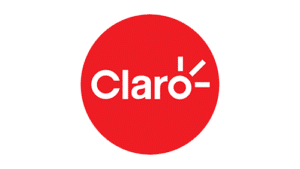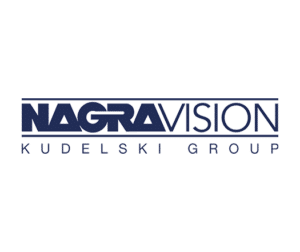In his last blog of the series, Tim Pearson explores the final part of a NAGRA interview with a pirate and considers how the industry can continue to respond to the challenges posed by content and service piracy.
If you’ve read the other two blogs in this series, you’ll be fully up to speed. If not, you can catch up on the human motivations of a pirate and a deep dive into the pirate ecosystem and economy.
The Technology Conundrum
Today’s hyper-connected lives means there’s not a lot we do that doesn’t involve some form of connected device talking to a server somewhere. Heating, travel, leisure, even taking a photo on our phones, our interaction with technology is ubiquitous. The challenge though, is that for every positive use of technology, there is an equivalent where it is used to cause harm at either an individual or industry level. Readers of the first two blogs will be familiar with the concept of “piracy eras” marked – and ended – by technology advancements. The IPTV era, described to us as a “hornet’s nest, has made opening illegal streaming services as easy as opening a laptop. Like a game of chess, the industry needs to block each pirate move to deliver an ultimate checkmate. In terms of the ‘how’, the pirate we interviewed had these words of advice for the M&E industry: Educate, Collaborate and Protect.
Educate: Driving Change in Consumer Behavior
Our pirate told us that his school age children are increasingly being educated about IP theft. Now with supporting legislation, the law has teeth through which to prosecute; laws that didn’t exist when a lot of today’s pirates were taking their formative steps into the IT industry. While such education will help to enrich knowledge of school age children, further industry initiatives need to be taken to drive changes in consumer behavior. Attempts have been made before such as in the early 2000’s the UK’s Federation Against Copyright Theft (FACT) and the Motion Picture Association of America in co-operation with the Intellectual Property Office of Singapore created a video that played at the cinema and on DVDs under the title of ‘You Wouldn’t Steal a Car, Piracy is a Crime’. While it showed downloading films to be a crime, it didn’t focus on the wider industry implications – which include the direct financial impact on the creative industries as reduced budgets, caused by lower box office or distribution revenues, means less content will be created.
Collaborate: An Industry That’s Stronger Together
Given the scale of piracy activity in the industry today, no single organization is going to bring piracy to a halt. Yet collectively, through industry coalitions such as Alianza, AVIA/CAP, IBCAP and Sygnat, all of which NAGRA is a proud member of, shared intelligence and insight is proven to drive effective action. And there are many examples of where this has happened. Operation 404 has been a large operation in Brazil, now in its fifth year of operation. It continually tackles piracy through Alianza, a coalition of content owners, industry bodies, law enforcement organizations and vendors. The firepower of such a body and the prosecutions it can leverage are significant. In our interview with the pirate, the continuous fear of getting caught came to a head when he received a single phone call threatening legal action and with it the risk of enormous debt. He stopped immediately. Other tactics such as ‘knock and talk’, as evidenced recently in the UK, can also be used in conjunction with law enforcement to deliver a strong message well before costly prosecutions are launched.
Protect: Keeping One Step Ahead
Pirates steal through technology so the best way to defeat them is with better technology. Technologies such as forensic watermarking and wider content protection solutions all have a key role to play in blocking piracy attempts. With solutions like forensic watermarking, there is no debate if the content is pirated – it’s clear who the content was licensed to and consequently where the leak originated. Not watermarking content is not only compromising potential revenue but also gives pirates free rein. Equally, if you’re a content owner, and your content has been pirated, without watermarking, you can’t know where in the distribution process or which licensee has caused the leak. This means recourse or even stopping the leak becomes impossible.
Look Before You Leap
Perhaps one of the sagest lessons from our interview with the pirate was also the simplest. The level of change in our industry demands rapid innovations through which to satisfy and delight subscribers. Used to attract and retain subscribers, new features are deployed to ensure competitive positions are retained and value is preserved. However, each time an update is issued to a service, it is immediately leapt on by the pirate community. Knowing the pace of change can compress development timelines, they interrogate the software to identify new opportunities that can be exploited. These loopholes, which may be found in one or many of the range of devices needing to be supported by today’s video service operators can potentially provide the next hornet’s nest of activity for pirates as content is gathered for inclusion in the pirate service.
But pirates also exploit loopholes across the entire content distribution chain. Pirates focus on how subscribers consume content which can mean exploiting vulnerabilities that are created through compressed development timelines of new features and the delivery of increasingly complex use cases. Ensuring that every door and every window is closed to prevent illicit access is key if the industry is to outplay our pirate foes.
It is because of these vulnerabilities that solutions are required to protect against streaming piracy. To address this threat, video service operators worldwide are using solutions such as NAGRA Active Streaming Protection to ensure every door and every window remains securely closed. Designed to protect every step of content distribution from camera to glass, they use a variety of technologies. These include forensic watermarking, multi-DRM, session management, CDN theft and app protection. When the results of these and other technologies are combined into a centralized security monitoring and analytics dashboard, security moves from a cost center to a revenue center. This provides a 360° view of piracy threats which enables both early warning alerts as new trends are spotted and, when combined with wider Anti-Piracy and cyber intelligence services, are instrumental in collating evidence that dismantles and disrupts streaming piracy.
Get in Touch!
If you have a role to play in the protection of your organization’s content from piracy, we’d love to continue the conversation. Our broadcast and streaming piracy experts are on-hand to help analyze your network and identify the current piracy threats alongside areas of vulnerability that NAGRA can help to address. Contact us to learn more!























